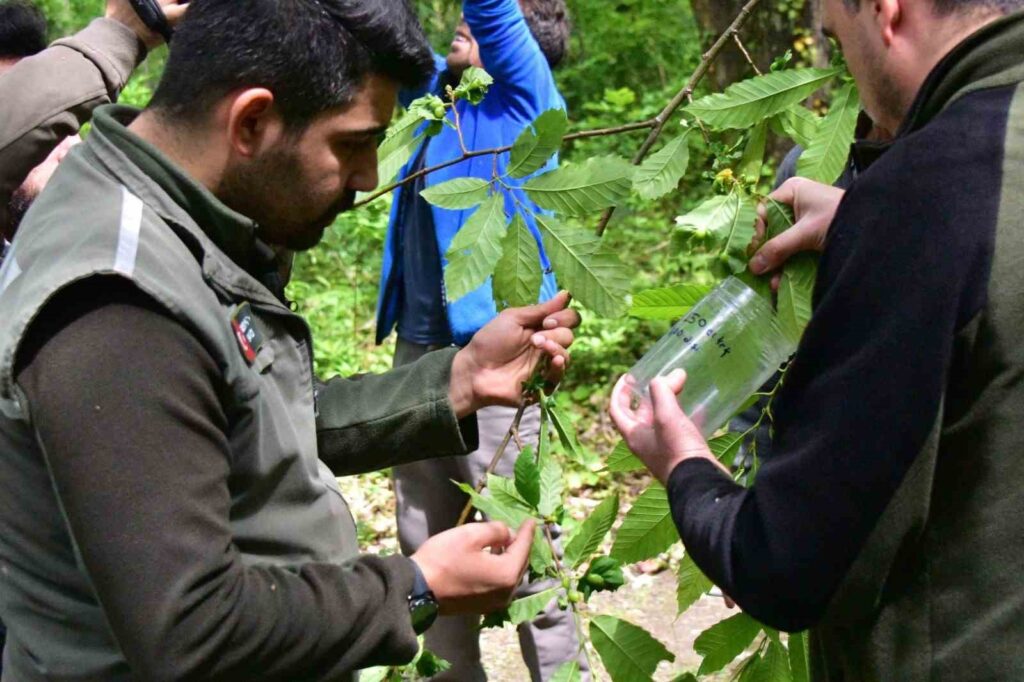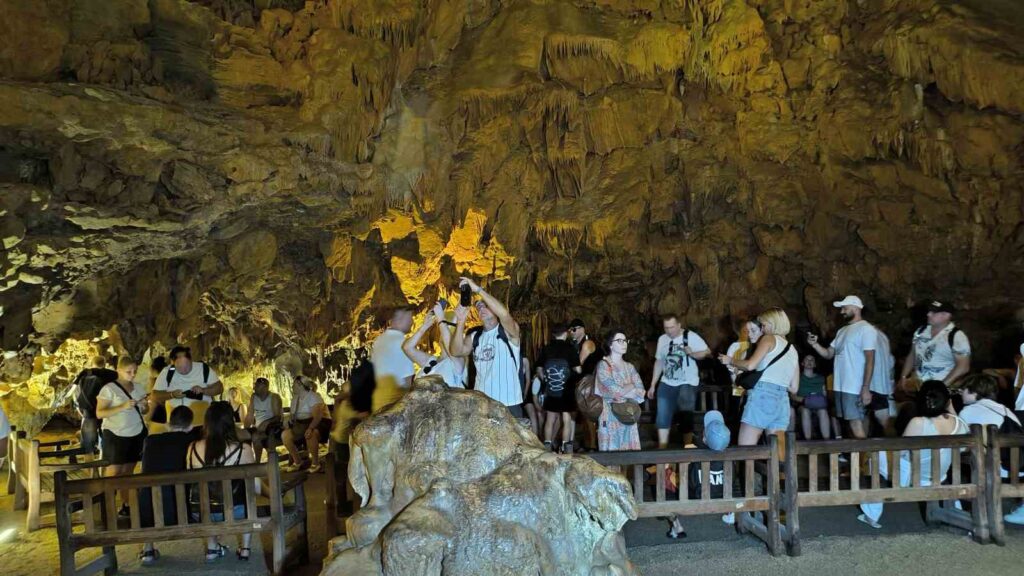Biological control continues against gall wasps that reduce the yield of chestnuts in the Black Sea region
In order to combat the gall wasp that is seen in the Black Sea Region and dries up chestnut trees, insects produced in the laboratory were released into nature in Kastamonu. So far, 8,000 insects have been released to chestnut trees by the Kastamonu Regional Directorate of Forestry.

In order to combat the gall wasp that affects chestnut trees in the Black Sea Region and causes them to wither, insects produced in laboratory conditions were released into nature in Kastamonu. So far, 8 thousand insects have been released onto chestnut trees by the Kastamonu Regional Directorate of Forestry.
The fight against the chestnut gall wasp, which was first seen in the Black Sea Region in 2021 and causes chestnut trees to dry up, continues unabated. In the laboratory of the Kastamonu Regional Directorate of Forestry, 8 thousand ‘Torymus Sinensis’ insects, which are known as the ‘killer bee’ among the public, were bred to reduce the damage caused by gall wasps, which feed on the eggs of the insects and cause the drying of trees and around 80% fruit loss.
Productivity will increase again. The Kastamonu Regional Directorate of Forestry first established a laboratory under the Cide Forestry Management Directorate to combat the gall wasp that lays eggs in the buds of chestnut trees, preventing them from blooming and eventually drying out the trees completely. The production of the insect named ‘Torymus sinensis’, which feeds on gall wasps, continues at the Forest Pests Diagnosis and Identification Laboratory established in Cide district. Torymus sinensis insects, bred as males and females in the laboratory, continue to be released onto the branches of chestnut trees that are damaged within the responsibility area of the Kastamonu Regional Directorate of Forestry. 8 thousand ‘Torymus sinensis’ insects produced in laboratories by the Kastamonu Regional Directorate of Forestry were released onto the leaves of chestnut trees in the districts of Doğanyurt, İnebolu, Abana, Küre, Bozkurt, and Çatalzeytin.
“So far, we have released 8 thousand insects into our forests,” said Uğur Şahin, Forest Engineer and Head of the Forest Pests Control Branch at the Kastamonu Regional Directorate of Forestry, providing information about the studies. He stated, “The chestnut gall wasp, known as the killer bee among the public, has been detected in our country since 2014. Our struggle against this pest has been ongoing for 10 years. It was also seen in our region starting from 2021. We immediately established a laboratory for biological control in the Cide Forestry Management Directorate in 2023. Meanwhile, we continue our releases of the ‘Torymus Sinensis’ insect that we brought from the laboratories of the Bursa Regional Directorate of Forestry. So far, we have released 8 thousand insects into our forests. We will continue to release the ‘Torymus Sinensis’ insect that we produce in the laboratory in Cide in the future as well.
“We will try to maintain the balance through both biological and biotechnical control,” said Şahin, who stated that they are trying to achieve balance within a year. He added, “In the fight against the chestnut gall wasp, we have both developed technology in recent years and also have biotechnical methods. In our biotechnical fight, we aim to catch the chestnut gall wasp in the air without laying eggs during its flight period in July and August. We equip the entire Kastamonu region with yellow traps made of attractive polymer to catch the chestnut gall wasp in the air without laying eggs. We started implementing this last year and saw great results. This yellow trap can catch between 400 to 700 pests during the flying period. By reducing the population of the pest with biotechnical control on one hand, and by ensuring the natural spread and increase of our beneficial insect in the field on the other hand, we are trying to minimize the population of this pest to the lowest level. Throughout the world, a balance has been achieved in one year in the fight against pests between 10 to 15 years. We have been applying this process for 2 years, and we will try to achieve balance in a shorter period of one year through the release of the ‘Torymus Sinensis’ insect and biotechnical control. The predatory ‘Torymus Sinensis’ insects we release into nature have no harm to humans or nature. They only feed on the larvae of the chestnut gall wasp, reducing that population. When the population of the chestnut gall wasp decreases after a while, the ‘Torymus Sinensis’ insect will also naturally decrease and remain in balance.
“With the support of our state, we will come out of this challenging process,” said Yaşar Dal, the muhtar of Cide Kayaardı Village. He mentioned, “Cide is covered with chestnut trees, and we produce chestnut honey. First, the maintenance of the chestnut honey forest was done. Now, insects were released into the forest to fight against the gall wasp. Hopefully, with the cooperation of our state and villagers, we will get through this challenging process. Hopefully, we will overcome this. Chestnut trees do not produce caterpillars due to the gall wasp. Since they do not produce, bees cannot get honey from chestnuts. This also seriously damages honey production. That is why the Regional Directorate of Forestry is conducting a study, and they said that the fight will continue in the future as well. Hopefully, with our state, we will come out of this successfully and continue to produce chestnut honey happily.






